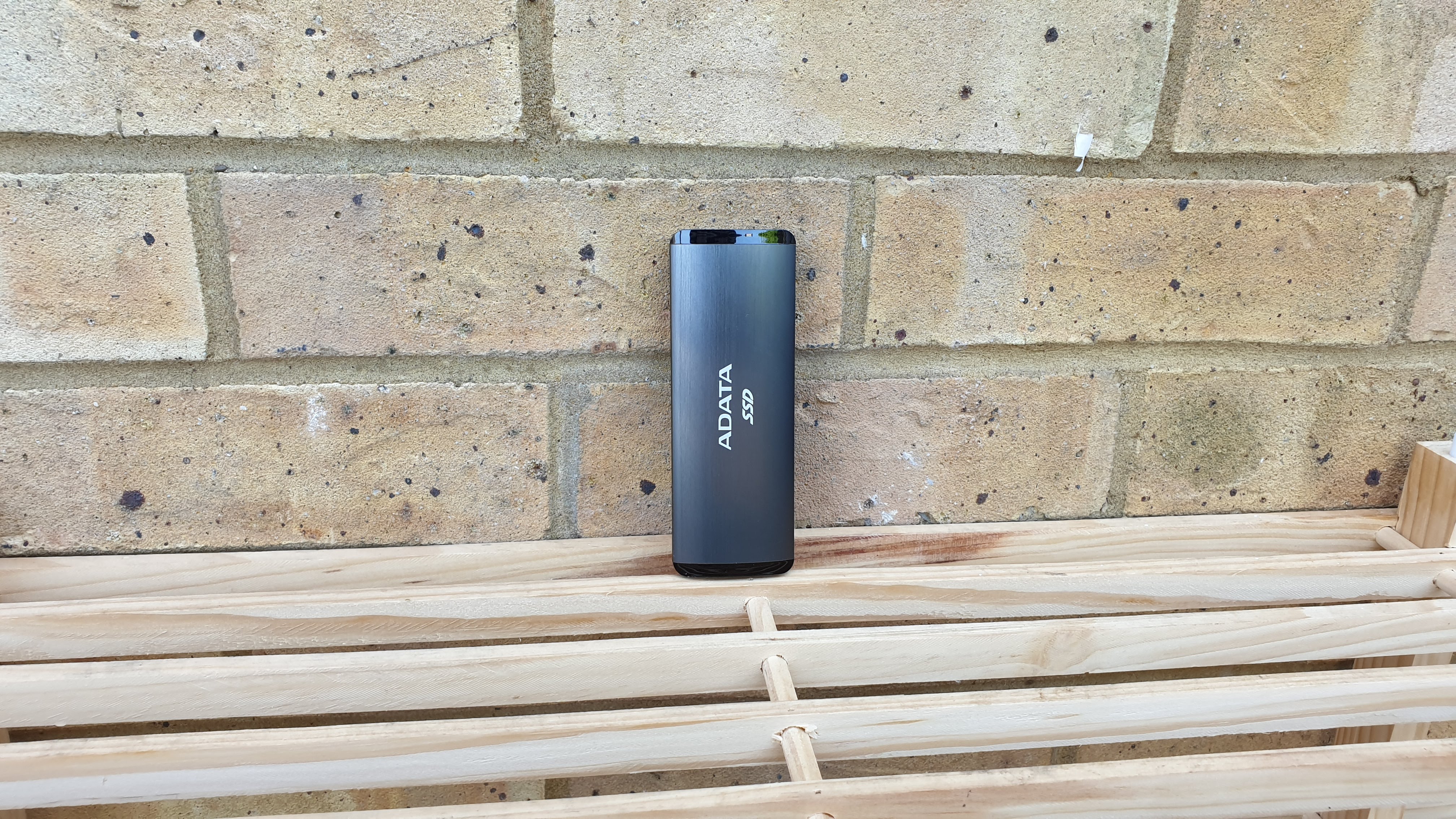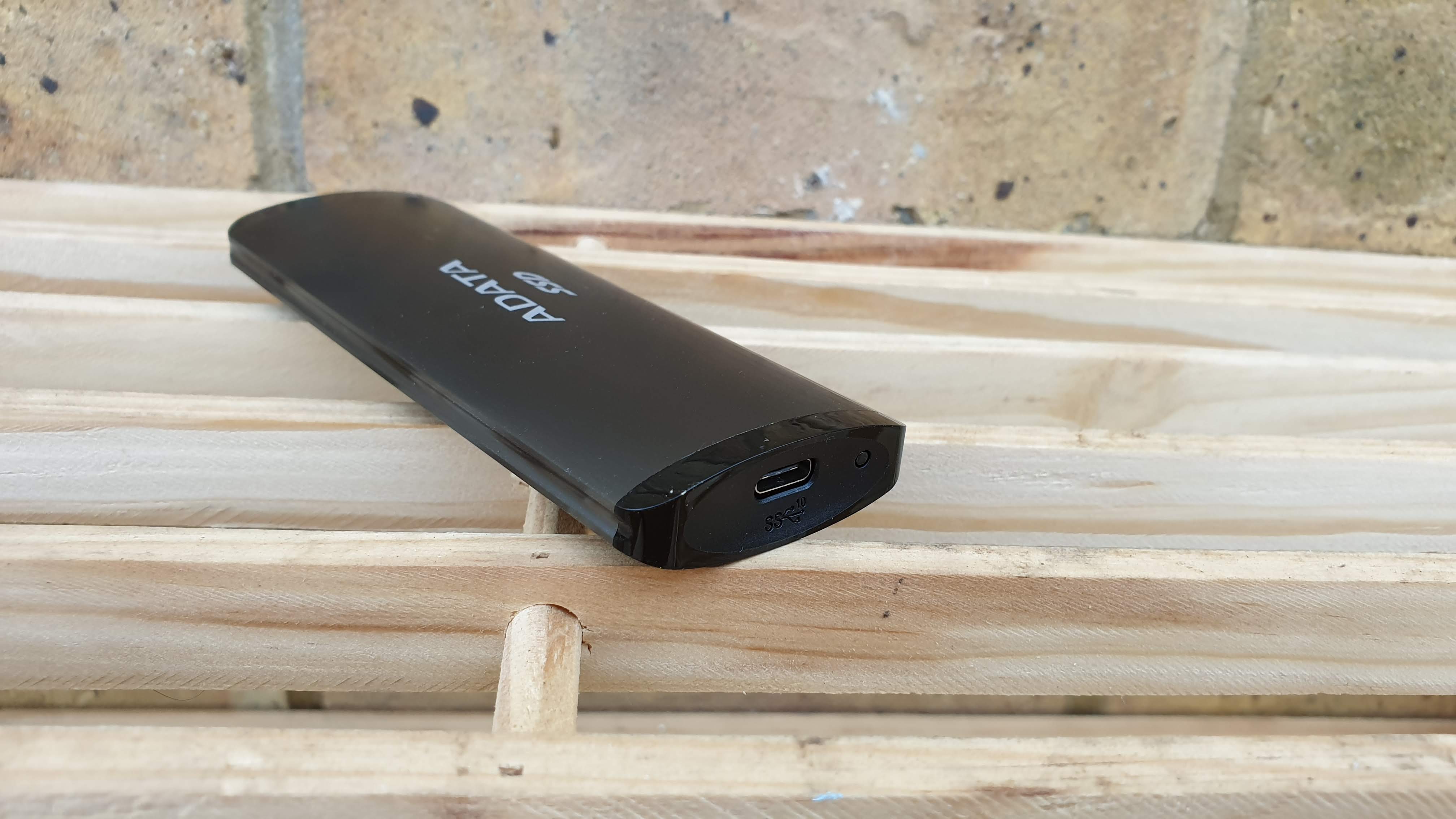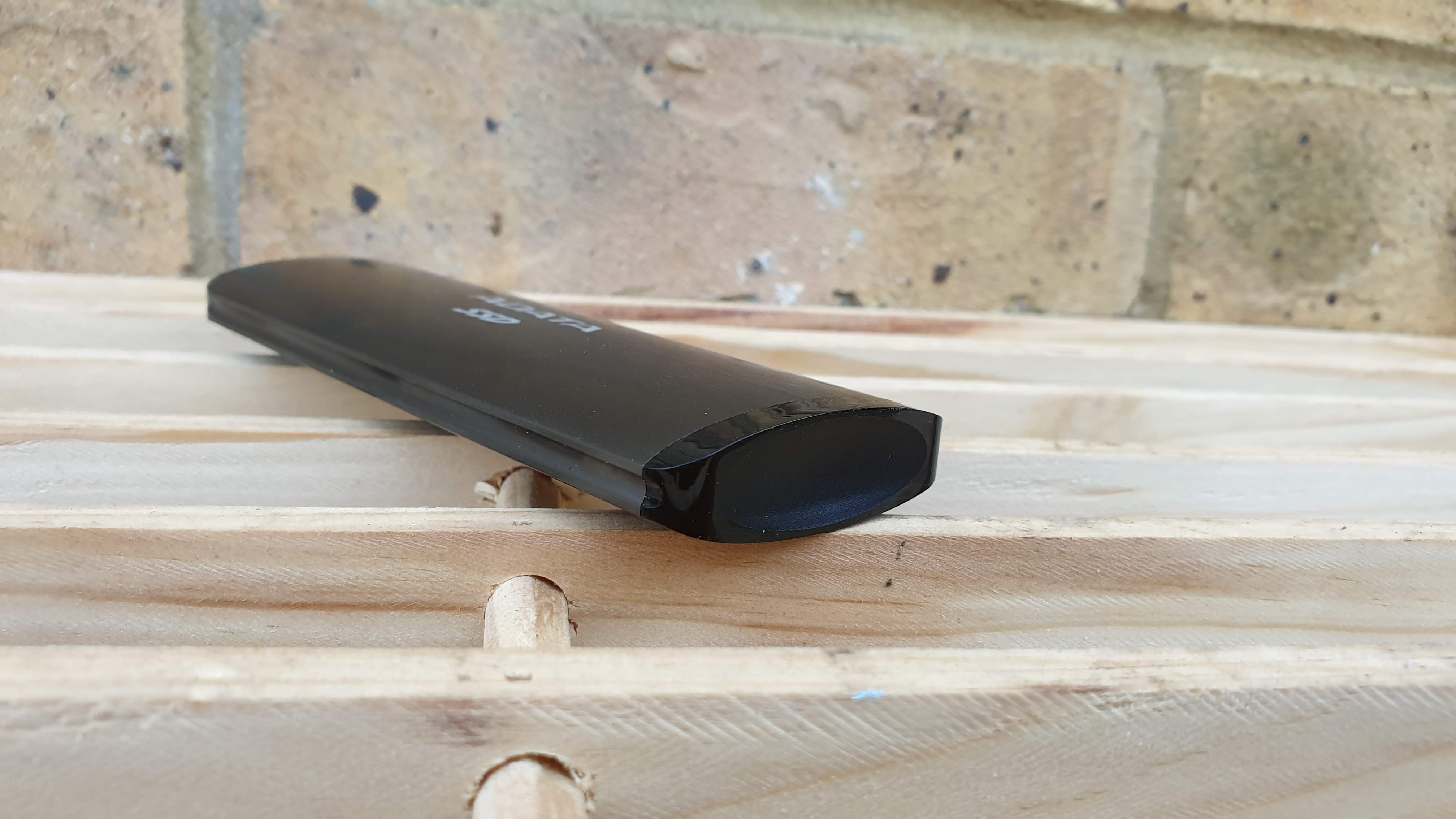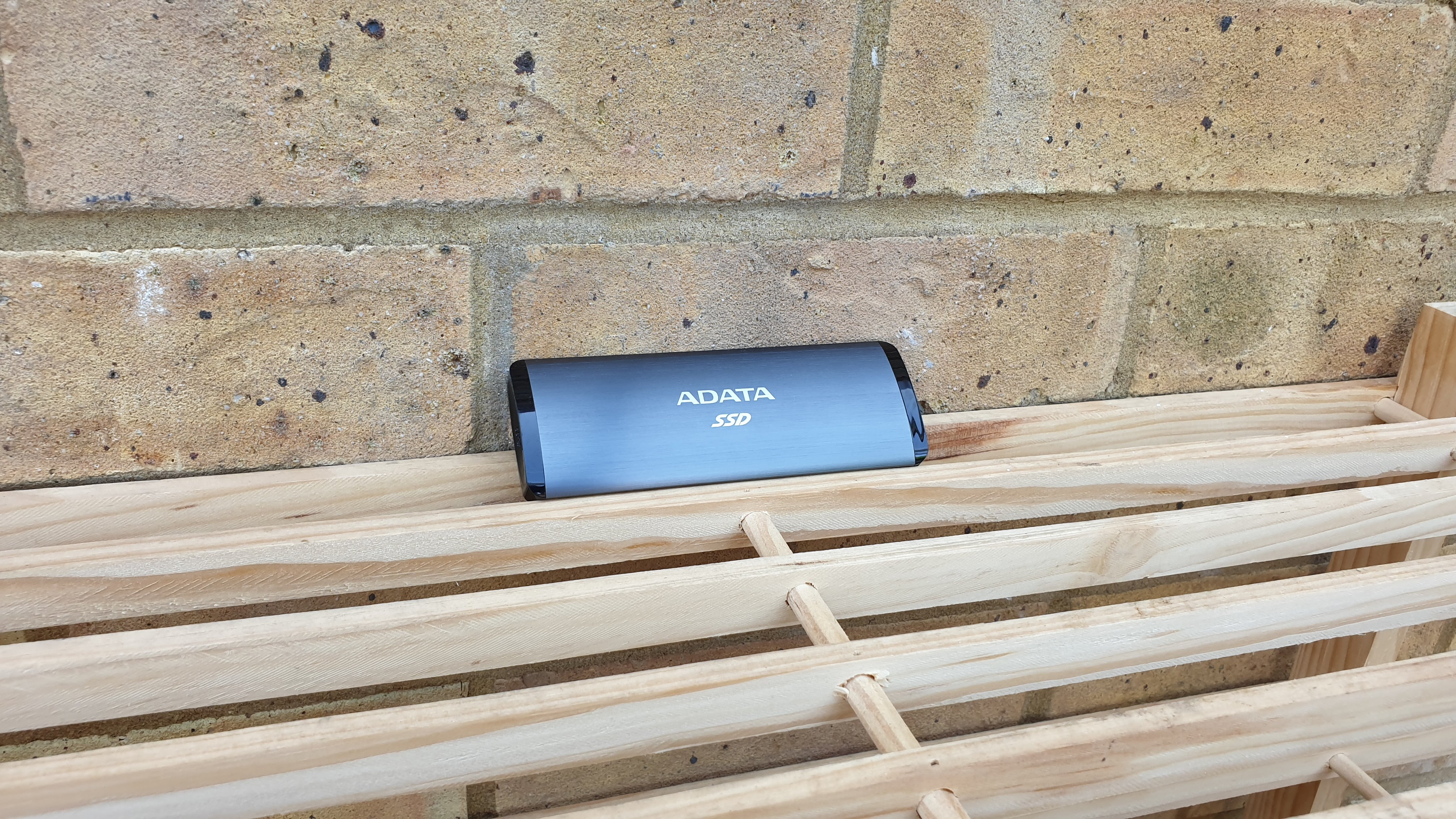TechRadar Verdict
The new SE760 from Adata is not a patch on the SE800. The latter remains the better of the two products as it is smaller and waterproof while also being cheaper.
Pros
- +
Fast
- +
3-year warranty
Cons
- -
Rather big external SSD
- -
More expensive than the SE800
- -
Not waterproof like the SE800
Why you can trust TechRadar
Adata has a long story of producing stellar storage products and the SE800, which we reviewed in October 2019, won our coveted editor’s choice by achieving the perfect balance of features (it is waterproof), speed and price.
It was always going to be a difficult act to follow, so we were surprised that the SE760 landed with a bit of an issue. Although it boosts the same specs as the SE800, it is about twice as big, costs the same and is not waterproof. So clearly, some problematic product placement.
That’s not to say that you shouldn’t consider it and there’s a lot to be liked about Adata’s latest external SSD. It is available in black or gray, in 256GB, 512GB and 1TB versions for $69.99, $89.99 and $149.99 respectively.

Design
At 122 x 44 x 13mm (at its thickest), this is a rather wieldy, not one that you can forget in your back pocket. That’s almost twice the size of the SE800 so there’s no real excuse for Adata to produce something that big. Same for the weight, at 77g, the SE760 weighs almost twice as much as its smaller sibling.

You get two short cables, a type-C one and a legacy type-A one and other than the usual icons, markings and branding, there’s only a status light and a type-C connector. This is not your standard USB 3.2 Gen 1 but the Gen 2 which can reach up to 10Gbps theoretically. That’s no match for Thunderbolt 3 interface which can go up to 40Gbps.

Adata used ABS plastic and what looked like an aluminum enclosure throughout, what the marketing literature refers to as “sturdy metal shell with a clean hairline-brushed surface”.

Performance and in use
There’s no bundled software on the drive although you can download two free applications: OStoGo and HDDtoGo from Adata direct. The first one allows you to seamlessly transfer an OS setup DVD to the USB storage system and install it on any compatible machine via USB booting (rather than DVD booting). Microsoft has a better tool called Windows USB/DVD Download Tool.
Here’s how the Adata SE760 external SSD performed in our suite of benchmark tests:
AJA: 640MBps (read); 786MBps (write)
CrystalDiskMark: 1043.19MBps (read); 840.92MBps (write)
Atto: 999MBps (read, 256mb); 796MBps (write, 256mb)
AS SSD: 898MBps (seq read); 733MBps (seq write)
The second is the more interesting one; HDDtoGo allows you to backup from PC to external HDD, backup external HDD to PC, synchronized backup (updating files to the same version on multiple storage locations), locking your PC and offers 256-bit AES encryption. It is a decent backup service but we’d recommend a proper cloud backup and cloud storage solution to deliver proper data resilience, especially for businesses
We found the drive to be faster on read compared to the SE800 and slower when it came to writes. It topped 1043MBps and 841MBps on Crystaldiskmark, usually our most optimistic benchmark when it comes to numbers. This means that the SE760 was speedier than Adata's own numbers. Adata’s XMG SX6000 Lite is what can be found inside the drive; it uses 3D NAND chips and is rated at 1.8/1.2GBps which is far higher than what USB 3.2 Gen 2 can achieve.
It also uses LDPC (Low-Density Parity-Check) error correcting code technology to detect and fix a wider range of data errors for more reliable data transfers and a longer product lifespan. Note that this drive carries a five year warranty.
The SE760 did feel warm to the touch but nothing alarming. What was however a bit more worrying was that the short cable meant that the drive would stress any USB port a bit more due to its extra weight.
The competition
Let’s address the elephant in the room, the other external SSD from Adata, the SE800. We gave this external SSD a 5/5 rating because it is fast, compact, has a Type-C connector, is reasonably sturdy and waterproof. At $150 at Newegg at the time of writing, it is also damn affordable, one of the cheapest 1TB SSD on the market.
When contacted, the PR team from Adata told us that the “SE800 is the most high-end external SSD in our product line which has 1000/1000MBps and IP68. SE760 is a little cheaper than SE800 and designed for business people and indoor use with no IP rating.”
The other rival to the SE760 worth considering is the dashing T7 Touch from Samsung. While it doesn’t offer any IP68/MIL-STD-810G rating, it has a fingerprint reader that transparently locks the content on the drive, a unique feature at this price point. At $230, it is a far more expensive proposition although it is far smaller while offering similar performance.
Final verdict
The SE760 is all things considered a worse product than the SE800, which leads us to question the marketing thought process at Adata that led to its launch earlier in 2020. Other than the bigger dimensions, the lack of IP-rating and the price, the SE760 is identical to the SE800 and includes Adata’s standard three-year warranty.
So Adata has to do either of the following; either increase the price of the SE800 or reduce the price of the SE760. But in a very crowded market, Adata has little leeway unless it eliminates some units altogether. The SD700 and the SD600Q might be prime candidates for that; let’s see.
What does the future have in store for Adata? Well, the current global pandemic means that demand for SSD is likely to soften significantly towards the end of the year which may cause new products to be shelved as inventory builds up and supply chain disruptions carry on. We would love to see a cheaper SE760 and - why not - a 2TB version of it since it does have ample space to accommodate even bigger drives.
- Also check out our list of the best portable SSDs

Désiré has been musing and writing about technology during a career spanning four decades. He dabbled in website builders and web hosting when DHTML and frames were in vogue and started narrating about the impact of technology on society just before the start of the Y2K hysteria at the turn of the last millennium.
